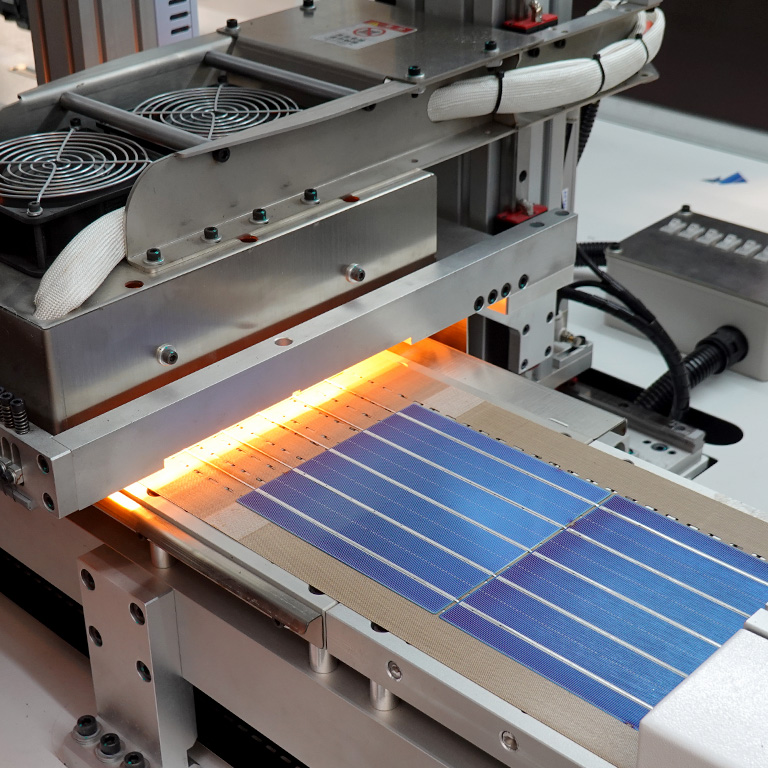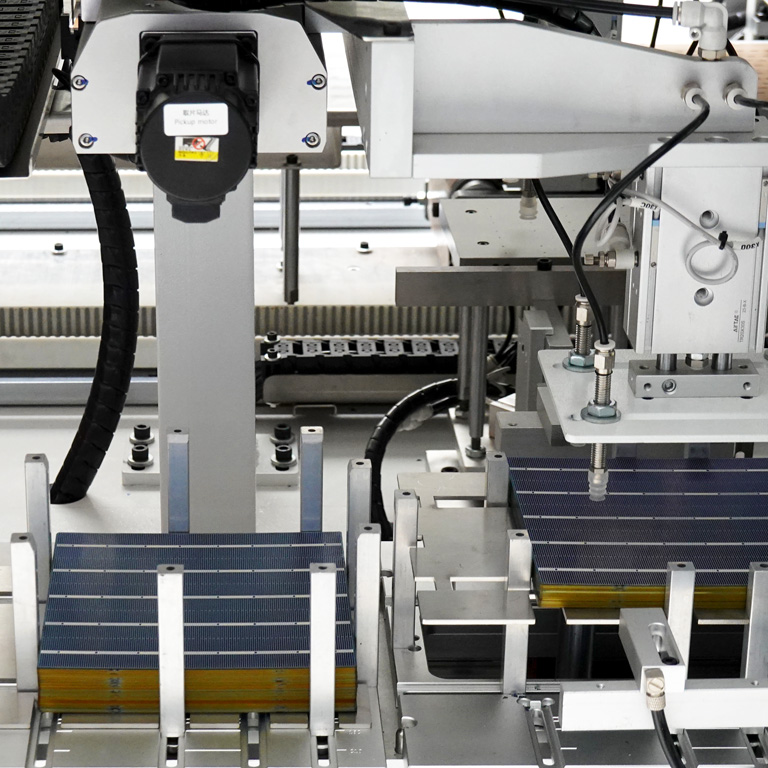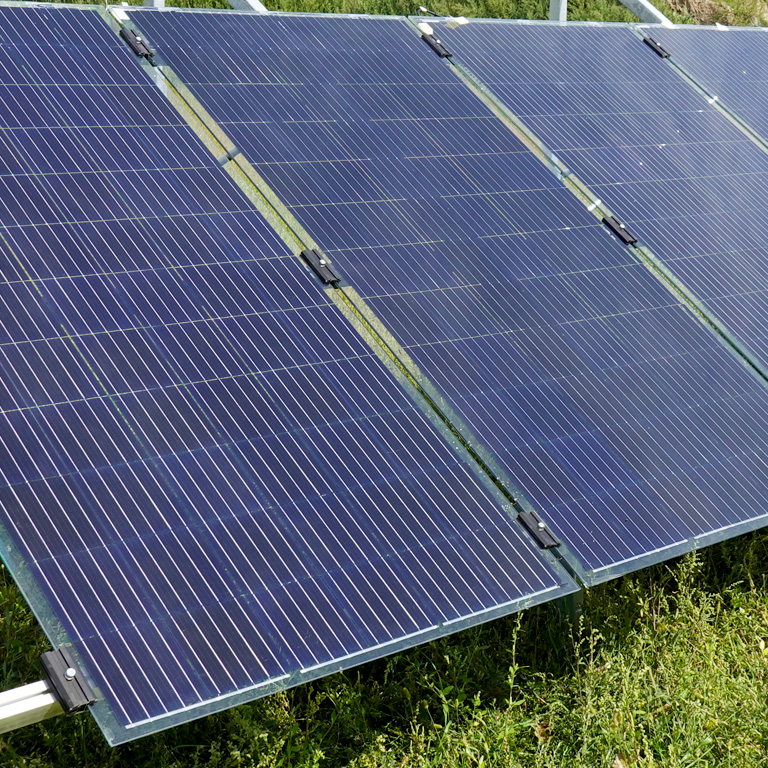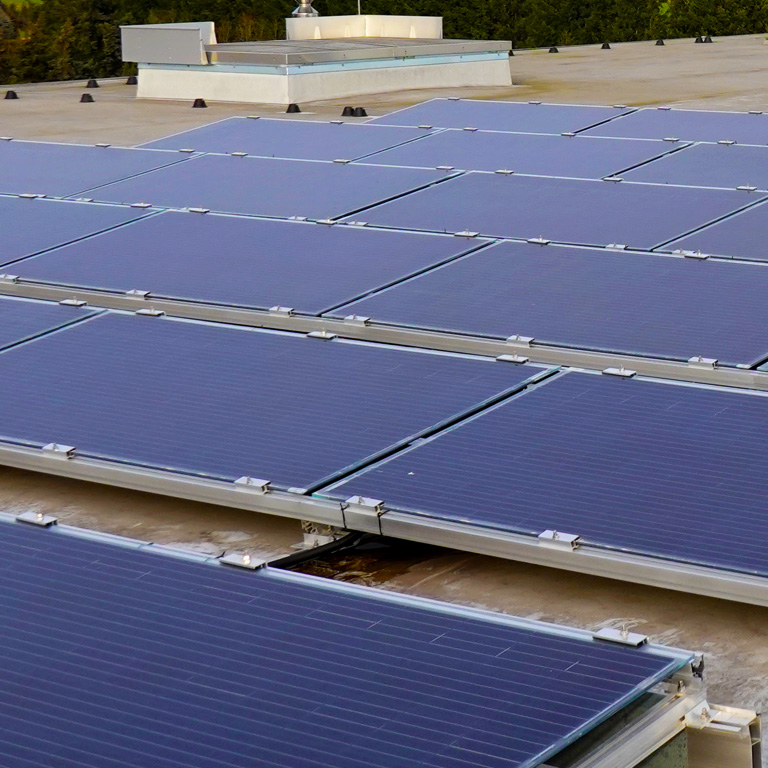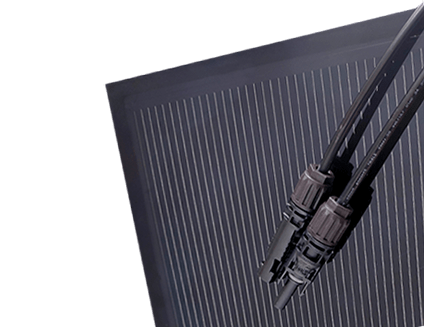
Si-FACTORY
Si-Factory is a project run by Roltec in parallel with the thin-film photovoltaics project. We have launched the production of high-quality monocrystalline bifacial silicon modules. Intensive expansion: a new hall and production line in 2024 will allow for significant automation and a dramatic increase in production. We combine production with the direct implementation of photovoltaic farms.
The project, financed and implemented entirely from the company’s funds, serves to meet its own energy needs. All production is directed directly to the implementation of our installations. We have developed and implemented a complete solar farm system for all types of surfaces. We install our modules with the help of third parties on flat roofs, sloping roofs and on the ground. We estimate the installations planned in the coming years at 40 MW. In 2024, we are implementing investments in the Wielkopolska, Łódź and Lower Silesia voivodeships with a total capacity of nearly 10 MW.
Full Bifacial Module G1
Roltec Bifacial G1 modules have glass on both sides, unlike traditional modules. The active layer is located on two sides, so light is absorbed from both sides (i.e. also the light reflected from the substrate). The modules achieve efficiency at the peak point that is up to 30% higher compared to single-sided PV modules (which depends mainly on the albedo). Additionally, glass-glass technology increases the module’s lifespan. It is highly resistant to mechanical damage, microcracks, salt mist, ammonia and fire.
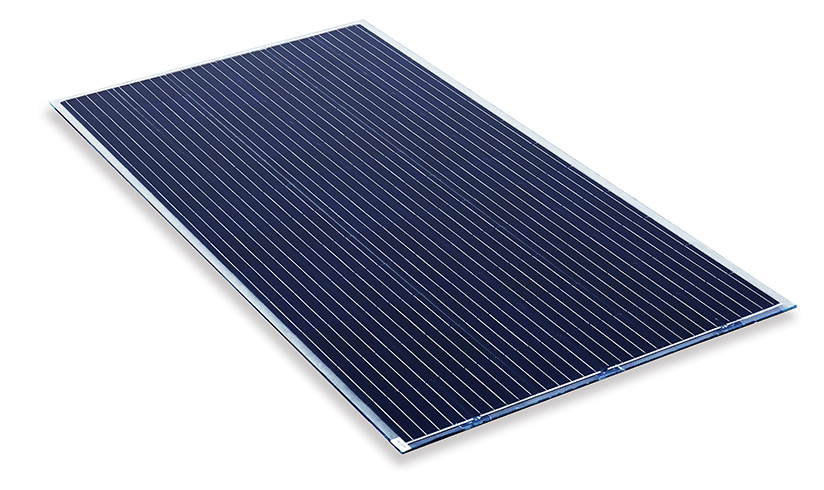
Module type:
BIG1CC72-PPYYWW-NN
- Power: 395 — 405 Wp
- Size: 1920x1020 mm
- Max efficiency: 21.5%
- High mechanical resistance
- Niska temperatura pracy
- Product technical data sheet
Production technology
Monocrystalline silicon photovoltaic modules are produced on a partially automated production line, guaranteeing high quality and repeatability of the process. At the same time, our research and development department conducts continuous work to improve the efficiency, quality and durability of our modules.
The first stage of photovoltaic module production is serial connection of individual cells using connecting tapes. During the soldering process, the employee eliminates damaged cells. The connected cells are placed on a glass covered with EVA foil and then electrically connected (soldered) to each other. After joining, subsequent layers of EVA foil and a 3 mm tempered top glass are applied, protecting the module against external factors. Then the edges of the module are secured with a special tape. The module prepared in this way is laminated (in an oven) at a temperature of approximately 140°C, where it is completely encapsulated. In the final stage, a junction box with cables is mounted to the bottom surface of the module.
Ready photovoltaic modules are checked on a solar radiation simulator under standard testing conditions (STC: 1000W/m2, 25°C, AM1.5G), where electrical parameters are determined, such as maximum power (Wp), short-circuit current (Isc). , open circuit voltage (Voc). The modules meet all applicable standards for the design and safety of photovoltaic modules (IEC61215, IEC61730, IEC63092, IEC TS 62941).
The Si-FACTORY project in numbers:
Our performances
We implement solar installations on roofs and on the ground based on dedicated and proven components.
Installing a photovoltaic farm often involves the construction or expansion of existing transformer stations.
A comprehensive approach — starting from the production of modules and ending with the construction of the farm guarantees maximum reduction in the costs of kWh production.
The complete installation includes:
- G1 solar modules,
- supporting structure,
- inverters (Sofar),
- wiring,
- electricity meters,
- monitoring application.

